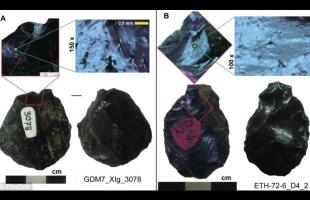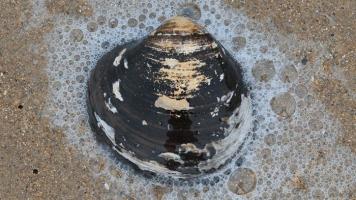Copy Link
Add to Bookmark
Report
HOMEBREW Digest #3267

HOMEBREW Digest #3267 Wed 08 March 2000
FORUM ON BEER, HOMEBREWING, AND RELATED ISSUES
Digest Janitor: janitor@hbd.org
Many thanks to the Observer & Eccentric Newspapers of
Livonia, Michigan for sponsoring the Homebrew Digest.
URL: http://www.oeonline.com
Contents:
Sierra Nevada info. (John Roe)
UKG Drunk Monk Challenge winners ("Steve McKenna")
Paragraphs (Spencer W Thomas)
Imperial Russian Stout (Brad McMahon)
the ultimate truth(s) ("Dr. Pivo")
fridge compressor controls (fridgeguy)
High Finishing SG's (woodsj)
unearned hangovers or another effect ("Peter J. Calinski")
Re: Get Your Questions Answered at MCAB! (Jeff Renner)
Alanta Beer (fred_garvin)
That Fullers Caramel flavor (Nathan Kanous)
Underpitching, ceiling splooge, Librarians (Dave Burley)
Re: YCKCo (Jeff Renner)
MEAD pitching rates (Chester Waters)
AHA First Round In Philadelphia May 6 & 7 - 1st Notice ("Houseman, David L")
Propane Burner/Big Brew (Richard Foote)
RE: Teflon hose (Robert Arguello)
UK Brew / Breweries ("Vernon, Mark")
Re: Palexperiment questions (Jason Henning)
<<DON'T>> do this: (Darrell Leavitt)
EDME casks, FWH. starting all-grain ("Stephen Cavan")
* Beer is our obsession and we're late for therapy!
* AOL members: Visit the AOL Homebrewing boards before they're gone!
* Go to aol://5863:126/mBLA:185893
* Entry deadline for the Mayfare Homebrew Competition is 3/15/00
* See http://www.maltosefalcons.com/ for more information
Send articles for __publication_only__ to post@hbd.org
If your e-mail account is being deleted, please unsubscribe first!!
To SUBSCRIBE or UNSUBSCRIBE send an e-mail message with the word
"subscribe" or "unsubscribe" to request@hbd.org FROM THE E-MAIL
ACCOUNT YOU WISH TO HAVE SUBSCRIBED OR UNSUBSCRIBED!!!**
IF YOU HAVE SPAM-PROOFED your e-mail address, you cannot subscribe to
the digest as we canoot reach you. We will not correct your address
for the automation - that's your job.
The HBD is a copyrighted document. The compilation is copyright
HBD.ORG. Individual postings are copyright by their authors. ASK
before reproducing and you'll rarely have trouble. Digest content
cannot be reproduced by any means for sale or profit.
More information is available by sending the word "info" to
req@hbd.org.
JANITORS on duty: Pat Babcock and Karl Lutzen (janitor@hbd.org)
----------------------------------------------------------------------
Date: Tue, 7 Mar 2000 01:50:23 -0500
From: John Roe <Sensei_John_Roe@compuserve.com>
Subject: Sierra Nevada info.
I am looking for a retail outlet in Orange County,
Ca. (preferably South County) that has Sierra Nevada
Barley-Wine style ale in stock. Bought some in Santa
Clarita, can't find it here...
Also Sierra Nevada sells "pickled hops" on thier
website...are these a good thing?
Sorry for the non-technical post...
John Roe
Laguna Hills, Ca
www.martialartsacademy.org
You should never be in company
that you wouldn't want to die with.
---Freman proverb
------------------------------
Date: Tue, 7 Mar 2000 02:01:20 -0600
From: "Steve McKenna" <mckennst@earthlink.net>
Subject: UKG Drunk Monk Challenge winners
The Urban Knaves of Grain's 2nd annual Drunk Monk Challenge was held on
March 4 at Two Brothers Brewery in Warrenville, IL. There were a total of
276 entries, which were judged in 20 flights culminating in a Best of Show.
An additional category, the Menace of the Monastery (strong Belgians,
Belgian pale ales, and doppelbocks), was judged separately. The BoS and
Menace winners are shown below. For the complete list, please see the
competition website, http://www.synsysinc.com/srcoombs/ukgdmc/ukgdmc2k.htm.
Thanks to all the judges, sponsors, volunteers, and entrants who made our
competition possible!
BEST OF SHOW
1 Pete Kapusta/Steve Gryczynski (Silverado): sweet mead
2 Steve Piatz (Minnesota Homebrewers Association): framboise
3 Tim Hamilton/Matt Wooten (Kansas City Bier Meisters): weizenbock
MENACE OF THE MONASTERY
1 Mike Brennan (Brewers of South Suburbia): dubbel
2 Patrick Fimbres (Rillito Creek Brew Club): tripel
3 Michael Uchima (Urban Knaves of Grain): tripel
------------------------------
Date: Tue, 07 Mar 2000 04:27:42 -0500
From: Spencer W Thomas <spencer@engin.umich.edu>
Subject: Paragraphs
Hi.
Some of you seem to have forgotten about paragraphs. You know -- a
small unit of writing, containing several sentences, which introduces
an idea, discusses it briefly, and then ties it up.
And then the next paragraph can diverge from the previous one, or
enlarge on it, or illuminate it. But the main idea of the next
paragraph will usually be at least a little different from the
preceding one.
The space between the paragraphs provides a resting space for the mind,
and a place for the wandering eye to "resynchronize" with the text.
It says "Hey! Pay attention! Something is happening here!"
When I start reading an email with one long paragraph (can you even
call it a paragraph?) I usually lose track after about the first
"screen full" (24 lines for the youngsters in the crowd). I succumb
to visual fatigue. (It happens more quickly to us over-40 types. :-)
You may be making an important point, one that I would be interested
in, somewhere in the middle of that essay. But I won't see it. I'll
miss out on your brilliant insight.
So think about what you're writing. Figure out where the new ideas
start. Highlight your main points by STARTING A NEW PARAGRAPH!
My mind thanks you. My eyes thank you. Oh yeah, and since each new
paragraph signals a point at which I can take another swallow of beer,
my mouth thanks you. (I had to mention beer somewhere or Some
Guy would bounce the message. :-)
=Spencer Thomas in Ann Arbor, MI (spencer@umich.edu)
------------------------------
Date: Tue, 07 Mar 2000 20:30:05 +1030
From: Brad McMahon <brad@sa.apana.org.au>
Subject: Imperial Russian Stout
I have just read Jeff Evans' column in CAMRA's March "What's Brewing"
issue. It appears those lovely folks at Scottish Courage as well as
closing the Courage brewery in Bristol (only 300 years old) have
decided to stop brewing Imperial Russian Stout.
Another world classic fading away.
Brad McMahon
Aldgate, South Australia
------------------------------
Date: Tue, 07 Mar 2000 13:17:05 +0100
From: "Dr. Pivo" <dp@pivo.w.se>
Subject: the ultimate truth(s)
Whew, what a day!
A decimeter of new snow, the tractor battery dead, once I DO get it
started, the chains slipping.... out and adjust them with numbing
fingers (gloves are SUCH a poor invention).
Then out at the edge of the barley field (6 row, don'cha know) and
trying to plow up an extension to the start of my son's toboggan run,
and I get hopelessly stuck.
Go and get some boards to jam under the wheels, and it just merrily
spits them out.
Should I chain a log between the back wheels and override the
differential? Naw, I'll just take the kamikaze run..... over the edge
towards the forest at an angle of inclination that makes brakes useless
appendages, and no way of steering unless I ACCELERATE!
Hey I only took out two small birch trees before I reached level ground
and bent the plow a "little" bit.... how bout cooking up some coffee and
reading a little HBD.
And what do we find?
Steve A asks:
> I'd like to know what the viable cell count for rehydrated dry yeast in
> order to calculate a good pitching rate tho'. Anyone with a hemocytometer
> care to help out ?
I suppose I could get out the chamber and some methylene blue and do
this, but I sure can't see the value in that number.... it is surely to
be different with different products, and since my experience is
"different rates for different strains", what you'll get is a non
transferable number. If anyone else is interested in doing this, I'm
guessing a saline solution for mixing 'em up. Distilled water might push
some into osmotic shock that wouldn't have been, and any sugar nutrients
and you might set things off.
On the other hand, most places have, or are converting to machine
counting of white blood cells, and since the manual counting was so
important and those slides so easy to break, most places had at least
two. You might find you could pretty easily come over one, if these are
really questions that plague you.
Why just the year before last I got an incubating box that someone was
going to trash, simply because they had purchased a more portable one.
And now to some comments on my posted pitching rate with Edme (I lied a
wee bit, the actual number is 55 grams in 120 litres or .458
gms/litre... but I think this is no "biggee").
Steve says:
> I don't know about Edme, but Lallemand suggests 0.512 grams per
> liter [60gm/bbl] to commercial brewers
I'm actually not surprised to see professional yeast producers
suggesting in the neighborhood of my emperical experience, they are,
after all producing a product, and that usually means their suggestions
are tempered with reason.
Alan Meeker chimes in:
> Interestingly, this rate of about 10 grams dried yeast per 5 gallon batch is
> in fact pretty close to the "commercial" pitching rate! So this is what he
> means by "underpitching?" No wonder he doesn't see any problems!.....
Yep, as I said the professional advice seems pretty sane... it is quite
different with our keyboard heroes.... they have something the
professionals don't.... it's called "non-accountability".
It seems these fellows use literature as weapons of argument rather than
sources of information.
Hey... I've got an idea! Let's make them accountable!
Let's see what Alan Meeker has to say about pitching rates when he's not
looking it up for the sake of this argument, but is looking it up for
ANOTHER argument:
Here's from Alan Meeker on 16/Aug 1999:
> At any rate,
> it seems 10 billion cells per gram dried yeast is a reasonably conservative
> estimate to work with. This leads us to the conclusion that you should be
> using about 20 GRAMS OF DRIED YEAST PER 5 GALLON BATCH. This means using 2 -
> 10gram packages to reach the "commercial" pitch rate
Hmmmmm. Different truths according to the argument.
Now let's take my little Edme example, and see what I was really trying
to say, and compare it to the HBD truths that are stamped into the ether.
These are my own interpretations which I won't support by quoting, but
I'm pretty sure we all recognise them.
HBDisms:
1)On Pitching: The more the merrier. Reccomended rates are less than
optimal. You are asking for a host of odd flavours, and infection, if
you don't boost those pitching rates.
2) On Primary Fermenters and Fermentation: They should be closed with a
blow off. Otherwise you are further risking contamination, and even
worse may expose to oxygen, which the yeast should never see except when
you blast the bejeezus out of them with it at the beginning. Under no
circumstances should you EVER leave the primary until the head has
completely fallen.
3) On Fermentation Temperatures: Keep within the manufacturers
reccomendations or you are asking for trouble.
4) On Lag Times: Don't have them. Hopefully the yeast should jump back
out of the wort as you pitch them in. Every second that there is no
krauzen is a second of impending infection.
Pivisms: (excusing the other Dr. Pivos... in true pivonian style they
have gone on to discover other "truths").
1) On Pitching: Each yeast strain will act differently, and you may find
a more interesting flavour profile by pitching at less, rather than
greater, than the suggested rate.
2) On Primary Fermenters and Fermentation: Since I started by imitating
breweries and all the ones I visited had open ferments then, I only knew
about this way until Charlie's book came out. After that I did a lot of
closed fermenting, and it's just "not the same". You may do either that
you choose as long as you realise that, and that your findings are not
directly tranferable to the technique you are not using. I do believe
that letting the head fall in an open fermenter will allow minute
additions of oxygen late in the primary, and will effect the flavour
profile in a positive manner... I've never found a word in the
literature about this, so I'm just speculating about the theory.... I
just know how it works.
3) On Fermentation Temperatures: In general, I like them as low as I can
get them that they will still work, and many work outside of the
manufacturers reccomended range (Edme and Danstar Nottingham are two
that certainly do). Higher temp ferments not only add flavours that I am
not so fond of (estery, fueselly), but they have a remarkable "edginess"
where the flavours tend not to "meld" as well.
4) On Lag Times: If you have been "reasonably clean" (and by that I
don't mean inserting an iodophore suppository before entering the
cellar, in case you "break wind" risking contamination), then I wouldn't
worry too much about it. Especially if you are working at lower
temperatures. While your yeast may need more time to get rocking at
those temps, so will any infective process.
Actually some pretty simple stuff, huh?
Pretty different than the accepted norms here, though.
I don't think that I am particularly unique in having discovered these
things, either. It's just that anyone with varying opinions get shouted
down so fast that people who figure stuff out that doesn't match the
textbooks, don't post here.
And to a more positive Steve A comment:
> I did a triangle test at my club meeting
> last month, and another among some friends last week and several
> others earlier in the year.
Glad to hear that, Steve. Maybe my continuing badgering on the
importance of presenting objective taste impressions was not in vain
(Gawd, he's just gon'na HATE to read that).
and this?:::
> Apparently Pivo's converted up-the-kilt spy-cam is malfunctioning.
I suppose Steve's knowledge of geography and cultural traditions shall
go in the same book as his Lamarckian inheritance theories and Dave
Burley's unique ideas on human physiology and dieting.
If I was a Scot I'd probably bake Steve into my next haggis and serve it
to an undesirable neighbor just for suggesting Pivo was a member of the clan.
Dr. Pivo
.... think I might make another suicide run on the tractor.... I haven't
had a rush like that in years.... If you think "ultra-lights" are fun,
Phil Yates, you ought to try an "ultra-heavy"!
------------------------------
Date: Tue, 7 Mar 2000 08:15:01 -0500
From: fridgeguy@voyager.net
Subject: fridge compressor controls
Greetings folks,
In HBD#3266, Paul Lyon talks about
temperature control system design and
needs compressor duty cycle recommendations.
Most fridges today are designed to operate the
compressor at about 50% duty cycle under the
normal ambient conditions expected (kitchen, 70
deg.F,etc). The compressor itself is rated for
continuous duty and will happily run for years
under proper conditions without stopping. The
compressor and motor run in an almost ideal
environment - no moisture, oxygen, or dirt, and
plenty of oil.
The compressor and motor are cooled by the
saturated refrigerant vapor returning from the
evaporator. Excessive heat load on a
refrigeration system will elevate the temperature
of the returning vapor. If the load is too severe,
the compressor will overheat and the oil will
start to break down. In operation, the suction
line (line between the evaporator and
compressor) should be cool to cold to the touch.
If it's hot after the system runs for a while, the
system may be overloaded and the compressor
may overheat.
In designing temperature controls for
refrigeration systems, one needs to allow
sufficient time after compressor shutdown for
the system pressures to equalize before trying
to restart the compressor. Compressor motors
don't have a lot of starting torque and will stall,
cycling on the thermal overload until the
pressures sufficiently equalize.
Many thermostats and temperature controllers
have a built-in 5 minute timer that must time out
before the compressor is allowed to restart. It's
simple to add one to a controller in the design
stage. An alternative is to use a 5 deg.F
differential (hysteresis) between compressor cut-
out and cut-in. This works as long as the
temperature probe is located where it won't get
a blast of warm air when the door is opened.
An X10 appliance module will work fine to start
the compressor, but be aware these modules
have a "local control" function that will close the
relay if the compressor control circuit is opened
and closed twice. This can cause problems if a
power "blip" or outage occurs, or if the original
temperature controller is still in the circuit. It is
possible to defeat the local control feature, and
I'd highly recommend doing it. Look at the X10
FAQ for details.
Please send a copy of your circuit diagram
when you get it finished.
Hope this helps!
Forrest Duddles - FridgeGuy in Kalamazoo
fridgeguy@voyager.net
------------------------------
Date: Tue, 7 Mar 2000 08:30:57 -0500
From: woodsj@us.ibm.com
Subject: High Finishing SG's
Been having some higher-than-normal finishing gravities in the
last few brews. Can the collective help with some practical know-how
and cures. There has been a lot of discussion lately and I may have
missed the advice on how to cure. Here's my situation, been brewing
IPA's and ESB's with starting gravities in the 60's and low 70's. The
yeast gets going quickly and strong. Activity has ended at 1.016-1.018.
I want a lower FG and remove some of the residual unfermented sweetness.
I'm using starters pitched from previous primaries (not washed or
"reconditioned"), pitching 18-20 ozs. of slurry in the new wort. The
winter temperatures in the basement hover around 60 degrees. I know
it's a little lower than desireable. The 2 yeast strains are 1056 and
London Ale 1028. I know 1056 may not be appropriate for style but it
was a 'speriment. The finished beer tastes OK and is drinkable.
Will this continue the debate over pitching quantities ?
What's the reason for higher FG's, low ferment temps, tired yeast from
previous brews, underpitching ? What's the cure - ferment at higher
temps, start with new yeast, choose a different yeast, pitch more yeast
slurry ? What about rousing the yeast from bottom of primary or secondary
?
Jeff Woods
Camp Hill, PA
------------------------------
Date: Tue, 7 Mar 2000 06:36:38 -0500
From: "Peter J. Calinski" <PCalinski@iname.com>
Subject: unearned hangovers or another effect
I don't know about hangovers, I haven't has one since I quit smoking in
1980; although I try to get one often enough.
I have noticed a different effect from some beers. Sometimes, about 4-5
hours after drinking them, (typically before going to sleep) I will pop up
wide awake, heart pounding at a high rate and body temperature very high.
It will sometimes take more than 1-2 hours for me to calm down and get back
to sleep.
I have noticed this with micros, megas, and my own homebrews. I can't say
particular brands or styles do it consistently and others consistently
don't cause it. It just happens sometimes. I used to think it was due to
the alcohol but the effect doesn't seem to correlate with the quantity of
alcohol consumed.
Pete Calinski
East Amherst NY
Near Buffalo NY
------------------------------
Date: Tue, 7 Mar 2000 10:28:25 -0500
From: Jeff Renner <nerenner@umich.edu>
Subject: Re: Get Your Questions Answered at MCAB!
Bob Boland asked:
>Have you ever tasted half a dozen or so homebrewed, cask-conditioned real
>ales served by beer engine in one place?
Or a Classic American Pilsner brewed right out of 1902 Wahl and Henius? A
1/4 bbl. Sankey of it is lagering right now and Southwest Airlines assures
me they'll allow me to check it to St. Louis as excess baggage.
Meet me in St. Louis.
Jeff
-=-=-=-=-
Jeff Renner in Ann Arbor, Michigan USA, c/o nerenner@umich.edu
"One never knows, do one?" Fats Waller, American Musician, 1904-1943.
------------------------------
Date: Tue, 7 Mar 2000 10:49:10 -0500 (EST)
From: fred_garvin@fan.com
Subject: Alanta Beer
Pete asks about the beer in Atlanta.
I was out that way last week, but my
beer tour was cut a bit short:
I managed to shake the shackles of The
Worlds Biggest Nerd, the 50 something
ex manager of our department who was
sent with me to Atlanta Wednesday night,
and headed for Buckhead.
I planned on hopping about three or four
brewpubs. First off, I hit John
Harvards. I ordered the Manchester Alt,
and struck up a conversation with the
beerwench, a little hotty. She was quite
informative about the beers they put
out, but soon ended her shift. My beer
conversation continued with "Jason",
the barkeep who took her place. He was
familiar with Kalamazoo Brewing Co and
their superb products. I finished my
alt (very good. Similar flavor profile
to mine which was heartening), and
asked to try the cask conditioned Celtic
Red. I found it lacking in hop
character. Before I got totally sloshed
on an empty stomach, my plan was to
hit a few pubs, and go back to the best
one for food. I asked for my bill,
and Jason said "Oh, don't worry about
it"! Cool, I thought- free beer!
Since the atmosphere was quite homey,
I said "Thanks alot! I'll stop back
by on my way through tonight."
"I'll be here all night" he responded.
After I left, I got a funny feeling.
A guy just bought me beer. And I
said I would be back. This coupled
with some of the flamers I'd seen out
and about made me feel even funnier.
Just up the street was Rockbottoms.
It seemed a lot more commercialized
and trendy than JH's. I went in and
bellied up to the bar and ordered the
sampler. A light lager, a Millennium
Lager- not quite a CAP, but
approaching, a Pinstripe Pale Ale, A
Brown and a stout. They were all
good, no flaws I could pick out. The
Pinstripe was the best, not over-
hopped, and nice 'n malty. My hunger
overcame me, and I ordered the
Bluecrab Stuffed Chicken. It was
unremarkable. About this time this
dude plunks down next to me and
orders the beer sampler. Just like
me! The hell if I could think of
any way to strike up a beer
conversation with him without it
sounding like a come-on. I made
no eye contact, paid my bill and
wandered out of the now full bar.
I hopped in the car, and started
off to the next destination... but
the stop and go traffic had me
keeping pace with these two other
dudes walking down the sidewalk.
Both had shiny pants. One was
wearing a smart little red velveteen
number, and the other guy was about
30 pounds overweight, and just
poured into a silvery metallic
blouse. I chickened out, went
back to the hotel room and drank
myself to sleep with a six pack of
Oregon Pale Ale.
Am I a homophobe?
Fred Garvin
Bagely's Feed and Grain, retired
Kentwood, MI
- ---------------------------------------------------------------------
Get free email from CNN Sports Illustrated at http://email.cnnsi.com/
------------------------------
Date: Tue, 07 Mar 2000 10:01:41 -0600
From: Nathan Kanous <nlkanous@pharmacy.wisc.edu>
Subject: That Fullers Caramel flavor
Hi All,
There have been some posts in the recent past looking for that "elusive
Fuller's flavor". I recently made a pale ale that, while not ready for
consumption, seems to have that flavor, although not quite as strongly as
Fuller's. It was a Sister star clone.
11 lbs of Schreier Special Pale Malt
1/4 lb DWC Aromatic Malt
1/4 lb malted wheat
2 oz DWC Special B
1 lb corn sugar (just for giggles)
I added some gypsum but don't remember exactly how much.
3 oz columbus hops X 75 min
2 oz EKG X 15 min
2 oz Fuggles during steep and recirculation
1/2 oz Fuggles dry hop
Burton Ale Yeast
I suspect that the caramel flavor comes from a combination of the Special B
and a touch of diacetyl. I don't really notice the diacetyl as above my
threshold of detection, but I think it contributes to this flavor. This
was made with the yeast cake from a batch of porter.
So far I'm happy with the beer, but the yeast takes forever to
flocculate. Both times I wanted to add gelatin (to the porter and the IPA)
I didn't have any, so time became my clarifier. The porter has really come
around to be a nice beer. I'm anxious to see how the IPA matures.
In conclusion, I think the use of a yeast strain of english origin, with
the Special B was what brought out this flavor. YMMV.
nathan in madison, wi
------------------------------
Date: Tue, 7 Mar 2000 11:19:49 -0500
From: Dave Burley <Dave_Burley@compuserve.com>
Subject: Underpitching, ceiling splooge, Librarians
Brewsters:
Probably the most dramatic result of
Louis Bonham's ale analysis was
that 75% of the brewers appear to
have bad sanitation as proved by
the other 25% who didn't. I find that
a pretty shocking result. It also
suggests to me that the Wyeast packet
was not infected < on the inside>.
I wonder how many HBers dip the
packet and scissors in diluted bleach
and then briefly into boiled water
before opening, as I always do?
You really shouldn't tear it open
with your teeth or fingers unless
you flame them first! {8^)
An interesting calculation that might
lend some credence to the idea
that higher pitching rate reduces
infection is if a plot of fermentation
onset ( itself a sloppy definition, I'll bet)
time were correlated with infection rate.
Even a crude parallel would perhaps
be of interest.
Louis does that show up? That is, if
you sorted all the infected brews from
the uninfected brews, were the
fermentation onsets substantially
longer for the infected brews?
In the absence of real data yet,
my bet is that infected brews are
dependent solely on the technique
of the brewer.
- ------------------------------------
PatB and others have chosen to
misread what I said. I said that
if you use a carboy for your primary
you are <running the risk> of
ceiling splooge, not that everyone
in every case will experience it.
The fact that we have one example
as detailed in the HBD proves
my case. The risk is there. I am
sure if we polled HBDers we
would find many more examples
of messes and splooge explosions
caused by trying to ferment the
primary fermentation in a carboy.
I graduated from fermenting
primaries in carboys at an early
brewing age when I got tired of
cleaning up the mess and realized
that any kind of overflow hose
( even before I saw this "solution"
in CP's book) would be a
<potential> for infection, eventually.
I choose to ferment in an "open"
primary which has no restriction in
the top and allows me to ferment
under a positive pressure ( unlike
overflow hoses and airlocks).
This positive CO2 pressure during
the primary fermentation essentially
prevents the ingress of infection.
The easy cleanability of this fermenter
is a plus to reducing the potential for
infection.
"Open" fermentations in which
the top of the fermenter is closed
with a plastic sheet reduces the
risk of messes and infection.
That is my experience.
- --------------------------------------
If being one who uses peer
reviewed literature as a basis for
my understanding of brewing
science and caring enough for
the HBD readership to spend the
time looking up the references in
readily available texts so that
others can check them, makes
me a "librarian", then I plead guilty.
Studying the available literature is
not the end for me as the label
"librarian" might be intended to
imply. It is the beginning. I at least
start off on solid ground in my home
brewing activities, instead of
returning to prohibition levels of
knowledge and rumor as some
would seem to want us to do for
some, as yet unexplained, reason.
I find the idea that this forum
should be run solely on opinion
and sloppy or no experimental
evidence absolutely appalling.
If it is too big an intellectual
challenge for certain readers, then
"page down". These readers likely
would not follow the results of the
discussion in their brewing
anyway, as some have already
indicated. That's their choice.
I find that the recent statements by
some to the effect that "I am a
scientist and believe in science
but don't think it belongs here in
the HBD",( or whatever was the
absolutely pointless point), to be
without logical understanding. What
is the actual point being made???
Perhaps the proponents would
be so kind as to carefully explain
when we should apply science
and when we should not. If your
comments are just ranting into
the wind to hear yourself, please
do it someplace else. If you have
a real point, make it.
If you have an idea or result
which differs from the results of
most textbook authors, then
you should support it with a
combination of literature
references and some real
<verifiable> observations. If
you have an opinion, label
it as such
I do not believe that in brewing
all things have been solved and
that all we have to do is look in
the "bible(s)" for the answer. I also
do not believe that commercial
<practices> are necessarily the
best ones for homebrewers,
BUT there are many <scientific>
results from many, many highly
skilled authors from years and
years of peer reviewed research
which should not be ignored.
Theories and applications
are another matter.
Discussion of the interpretation
of these results and other
scientific results offered by
HBD authors ( what is relatively
important and what is not) as it
relates to home brewers who
face different problems than
commercial brewers is exactly
what this forum should be about.
Also, we should include areas
not of interest to commercial
brewers, like not caring too
much about cost or capital
investment and market share
and such, but just about good
beer and fun ways to make
and enjoy it.
- -------------------------------------------
Keep on Brewin'
Dave Burley
------------------------------
Date: Tue, 7 Mar 2000 11:24:25 -0500
From: Jeff Renner <nerenner@umich.edu>
Subject: Re: YCKCo
Doniese@aol.com asks about Yeast Culture Kit Company:
>Does anyone know if they're still around?
Definitely still around. I happened to speak to owner Dan McConnell the
other day and he mentioned how busy he has been. His day job is a research
medicinal chemist at the University of Michigan and he has lots of other
projects. As a matter of fact, he hasn't brewed in ages. I just now
checked with him and understand he has already contacted Doniese.
Jeff
-=-=-=-=-
Jeff Renner in Ann Arbor, Michigan USA, c/o nerenner@umich.edu
"One never knows, do one?" Fats Waller, American Musician, 1904-1943.
------------------------------
Date: Mon, 06 Mar 2000 02:19:36 -0600
From: Chester Waters <cwaters@home.com>
Subject: MEAD pitching rates
Brewers:
On a parallel thread to all the recent posts on pitching rates, I'd
like some advise from the 'spurts on pitching rates for meads. I'm
planning a Orange Blossom Mead when my last lager goes into keg. I'd
like it to finish semi-sweet and plan to use the Wyeast sweet yeast. For
a OG around 1.010 in a 5 gallon batch, how much should I step-up the
smack-pack, and for that matter, should starters be mead/honey, or will
other fermentables do? What gravity is suggested for the starter 'wort'?
I don't want to drive off the volatile orange blossom aroma by boiling,
so I plan to pre-boil and chill my water, and maybe pasteurize the honey
at 160F in its shipping containers (at least it will be liquid enough to
pour) first . (I know its said that honey is so concentrated, its
effectively bacterioSTATIC, but wild FUNGI might be still viable - and
not grow - until diluted to pitching gravity. Its not bacterioCIDAL,
anyway). How about thoughts on oxygenation, of either the starters
and/or the whole 5 gallons? Since my tap water is nearly undrinkable,
all my brewing starts with RO water - what ions and concentrations are
desirable? Finally (at last) I'd appreciate thoughts on pros/cons on
yeast nutrient/energizers for the starters and main ferment.
Would one of the yeast experts let me know if visible CO2 generation
(air lock activity) occurs BEFORE (anaerobic) fermentation begins; i.e.
is much if any generated during cell wall synthesis and division in a
well oxygenated, nutritionally complete wort?
Thanks for help with all these questions.
Chester Waters - Omaha (Renerian exile)
------------------------------
Date: Tue, 7 Mar 2000 11:44:37 -0500
From: "Houseman, David L" <David.Houseman@unisys.com>
Subject: AHA First Round In Philadelphia May 6 & 7 - 1st Notice
The Regional First Round AHA NHC for 2000 is being held May 6 & 7 at Drexel
University'S DEPARTMENT OF Restaurant & Institutional Management (HRIM), at
105 N. 33rd Street, Philadelphia, PA. It is an easily reachable location,
about 6 blocks from Philadelphia's 30th Street train station served by
Amtrak and local service. (THE BUILDING IS IDENTIFIED ONLY AS 'ACADEMIC
BUILDING'.) We are inviting you to judge at this excellent location and
enjoy some Philadelphia hospitality for the weekend. We need judges and
stewards for this premier event. Judging will be held both days, punctuated
by lunch and followed by a "happy hour" on Saturday, CATERED BY THE HRIM
STUDENTS, AND INCLUDING BEERS FROM SOME OF OUR LOCAL BREWERIES AND BREWERS.
This location will be warmer than Red Bell was last year.
Judges and stewards are requested to be at the 6th floor of the HRIM at
9:00am on Saturday and 10:00am on Sunday. Judging will begin promptly at
9:30am on Saturday and 10:30am on Sunday. Please contact the Judge
Coordinator, David Houseman, at 372 Harshaw Drive, Chester Springs, PA 19425
or email him with the same information at dhousema@cccbi.org. Remember that
your commitment to judge is a commitment of your time, which we appreciate
and rely upon. So, we will be counting on your attendance if you tell us
you will be here. We will be using the new common BJCP/AHA style
guidelines.
Philadelphia in the Spring Time is a wonderful place to bring the whole
family. There are many museums, parks and historical and cultural activities
available to occupy the significant others whilst you judge. Downtown
shopping is a walk or one stop by train. The Philadelphia Zoo is a short
drive from the judging site. Even Camden New Jersey's aquarium, just across
the Delaware River, is just a fun ferry ride away! For lots of other great
things to do, and amuse yourself as well, check out noted beer author Lew
Bryson's new book, Pennsylvania Breweries. Each entry ends not only with
directions to beer but directions to selected nearby attractions. Now how
much would you pay? (Actually, the book is available by mail order- call us
at 215.569.9469).
Our plethora of INTERESTING beer bars in Center City are all located either
within walking distance of each other or a short ride on the "Phlash"- a
public transit van servicing downtown attractions from the Ben Franklin
Parkway to the Delaware River. AFTER SATURDAY NIGHT'S COMPLIMENTARY HAPPY
HOUR, KNOWLEDGABLE LOCAL GUIDES WILL BE AVAILABLE TO ESCORT YOU ON A TOUR OF
THESE GREAT ESTABLISHMENTS.
Places to stay:
There is a wide price range of hotel rooms available in the area. There are
also some smaller 'boutique' hotels and Bed & Breakfasts. For a listing,
please check the web sites of the MidAtlantic AAA at www.aaamidatlantic.com
or www.libertynet.org or we will be happy to send you a Visitors Guide with
full listings and activities. It is suggested that you make your
reservations promptly. Hotels near the airport will have shuttles to the
terminals, where there is an inexpensive direct rail line to Center City.
There are several hotels located at the junction of I-76 and US Route 1,
about a ten minute drive to Drexel University. THERE ARE ALSO SEVERAL HOTELS
WITHIN WALKING DISTANCE, BETWEEN THE DREXEL CAMPUS AND THAT OF THE
UNIVERSITY OF PENNSYLVANIA'S.
Directions:
The AMTRAK train station is located at 30th Street and Market Street in
Philadelphia. THIS IS ALSO THE STATION FOR REGIONAL RAIL, WITH SERVICE FROM
WILMINGTON SOUTH TO TRENTON NORTH AND HARRISBURG WEST. Upon exiting the
train station, walk West on Market Street 3 blocks to N. 33rd Street. Turn
right and walk two blocks to #105. Take the elevator to the 6th Floor. For
those that drive, parking is available on the street. PLEASE BE AWARE OF
PARKING REGULATIONS! (THE BEST ALL DAY PARKING BET WOULD BE ON 32ND ST.,
NORTH OF ARCH.)
Sponsors:
Sponsored by: George Hummel & Nancy Rigberg
Home Sweet Homebrew
2008 Sansom St.
Philadelphia. PA 19103
(215) 569-9469
homsweet@voicenet.com
------------------------------
Date: Tue, 07 Mar 2000 11:52:57 -0500
From: Richard Foote <rfoote@mindspring.com>
Subject: Propane Burner/Big Brew
Propane burner:
Mike Branam writes looking for a cooker manufacturer at
http://www.cyberbrewing.com/acb/showdetl.cfm?&DID=8&Product_ID=195&CATID=35
for use in his three tier system. It does look nice. I do not know the
manufacturer but found this site for burner elements at
http://www.burnersinc.com/itm00005.htm
I posted an inquiry to them asking if they could provide such a burner as
Mike seeks. We'll see what happens.
Big Brew:
Are there any plans for Big Brew this year? I know our club enjoyed it
because it made you feel part of the larger "homebrew community". And hey,
any excuse to get together and brew is good.
Rick Foote
Whistle Pig Brewing and Home Remodeling
Murrayville, GA
------------------------------
Date: Tue, 07 Mar 2000 09:00:40 -0800
From: Robert Arguello <robertac@calweb.com>
Subject: RE: Teflon hose
ON Sat, 04 Mar 2000 18:28:12 +0000
bmahon@att.net asked about
Subject: teflon hose
-are all forms of teflon food grade?
-i was poking around the mcmaster-carr website looking
-for a way to cobble together a site gauge and found
-several pages of plastic tubing. one or another is
-listed as "fda approved", but it only takes temperatures
-to 160f or so. then i found some pages listed as teflon
-tubing; the various materials are listed as resistant to
-this and that, but mention nothing about food safety.
-the specific materials are fluorinated ethylene
-propylene (fep), polyvinylidene fluoride (pvdf) and
-perfluoroalkoxy (pfa). i've spent several hours
-searching the net looking for info but no luck.
I use polycarbonate tubing for site gauges. Many advantages including...
High temp (up to 250 F )
Rigid tubing that can be used with copper compression fittings
Perfectly transparent
Strong and impact resistent
Cheap... I pay $10.00 for 10 feet of 3/8ths inch
Widely available... I get mine from a local "Plastics" supplier
Robert Arguello
robertac@calweb.com
------------------------------
Date: Tue, 7 Mar 2000 12:16:04 -0600
From: "Vernon, Mark" <vernonm@goportable.com>
Subject: UK Brew / Breweries
I will be spending 3 weeks in the UK at the end of this month and
beginning of April. Any recommendations / resources for finding
breweries to tour and the best pubs to visit would be greatly
appreciated.
Mark Vernon, MCSE+I, MCT
vernonm@goportable.com
www.goportable.com
------------------------------
Date: Tue, 07 Mar 2000 13:22:20 -0500
From: Jason Henning <huskers@psn.net>
Subject: Re: Palexperiment questions
In HBD3266, Keith MacNeal ask some good question about the HBD PAE.
+ How was lag time defined?
+ Did each brewer use the same definition?
Working from memory here, I think it was when there was positive
pressure in the airlock. It was discussed in the HBD PAE mailing list.
We were all to use the same method.
How much error do you want to attribute to this method? You can't
explain way enough of that 32 hour average to even come close to a
reasonable lag time. Even to say that the lag times were 100%
overstated leaves you with 16 hours.
+ What is the standard deviation around the grand average [of the
+ finishing gravity]?
+ Are those 5 batches statistically different from the grand average?
Standard deviation was .00396 gravity points. Those five batches are
over one standard deviation from the norm. Two of them are over two
standard deviations from the norm. What's your definition of
statistically different?
+ If they are, it doesn't mean that underpitching causes finishing
+ gravity >= to 1.020. It means there may be other factors which are
+ causing these five batches to be different from the other 29.
+ Brands of extract were the same?
Yes they were. As a matter of fact the grains all came from the same
lot. John Varady and his wife weighed and distributed the grains, the
hops, and the yeast. Please read the article for these details.
+ Factors which may be playing a role include: Fermentation
+ temperatures were verified to be the same?
+ Mash temperatures were the same (and everyone was using calibrated
+ thermometers)?
I haven't heard fermentation temperature cited as a reason for varying
finishing gravities.
The mash temperatures were the same. Calibrated thermometers weren't
used so undoubtedly there was variance. But do you think mash
temperature can cause a 2 standard deviation swing?
+ Hydrometers were accurate and temperature corrections were used?
I ignored the brewer measured finishing gravities. Instead, I used the
Louis Bonham's pycnometer measured finishing gravities. Again, please
read the article.
Cheers,
Jason Henning
Whitmore Lake, MI
There are three kinds of people: Those who make it happen, those who
watch it happen and those who wonder what happened.
------------------------------
Date: Tue, 7 Mar 2000 13:55:55 -0500
From: dleavitt@sescva.esc.edu (Darrell Leavitt)
Subject: <<DON'T>> do this:
Boy do I feel dumb!
2 pm, on a day off...brewing an all grain wit....started it at 9am...in the
last 15 minutes of the boil, I had placed my floating thermometer on the stove,
apparently too close to the heat...Well, as I placed it into the brew so as
to sanitize it...well....it BLEW UP! Yes...I am not sure if it imploded...
or exploded....but the result is the same...a potentially good brew had to
be poured out...
<<DON'T do this>>
..Darrell
------------------------------
Date: Tue, 7 Mar 2000 14:06:54 -0600
From: "Stephen Cavan" <cavanst@duke.usask.ca>
Subject: EDME casks, FWH. starting all-grain
John Herman <johnvic@earthlink.net> asks about plastic casks in the UK.
Sounds like an EDME pressure barrel. They take CO2 sparklers, have a float
for the dib tube, and perform quite well. Transfer from primary to EDME
barrel, like to a cask, and the finishing ferment provides the carbonation.
The sparkler provides replacement CO2 after dispense. We used to stock them,
but can no longer get them in North America. Perhaps someone else has a
source?
Bob Wilcox <bobw@sirius.com> asks about FWH and calculating bitterness.
Sorry Bob, I have no scientific data that would stand up to the rigors of
the HBD. But I do have batches that where we calculated the bitterness from
FWH as the same as a beginning boil addition, the bitterness seems to be
right. No lab analysis though. For what it's worth, ProMash v1.3b also
calculates FWH as a full boil addition. For MASH HOPPING (pellets), you get
flavour and aroma like a late addition, and negligible bitterness.
"Murray, Eric" <emurray@sud-chemieinc.com> asks about going all grain, but
wants to stick with 5 gal batches. Eric, if you stick with 5 gal, the
simplest set-up is a picnic cooler (no need for expensive Gott, a cheapo
Rubbermaid or Coleman will do fine. Get one with a pass-through spigot,
insulate the sides and lid with expanding spray foam, throw a false bottom
in, Phil's 9" works fine). Then all you need is a big kettle, and sufficient
BTUs to fire it. The false bottom will filter out your hops, you can use
either an immersion or a counterflow chiller. I love the CF and wouldn't go
back to immersion. In the interests of KISS: most malts are fully modified
and a single infusion mash around 154F will do... My $0.02 worth...
cheers,
Stephen Ross -- "Vitae sine cerevesiae sugat."
______________________________________________
Paddock Wood Brewing Supplies, Saskatoon, SK
orders@paddockwood.com www.paddockwood.com
------------------------------
End of HOMEBREW Digest #3267, 03/08/00
*************************************
-------





















